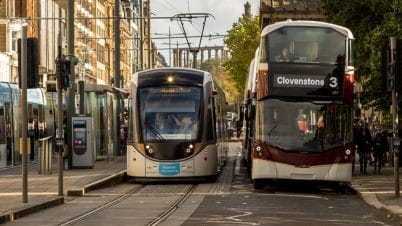Reduce congestion and energy use, and improve operational performance with a 21st century rail network.
Communications systems, security systems, electro-mechanical and BMS, information systems and business applications—it’s a web of rail network subsystems all required to keep railways moving forward and passengers safe.
Sorting out the benefits from the challenges
Rail operators face the very real challenge of rapidly changing technology. Trying to keep up to avoid obsolescence can break the budget. However, choosing a solution that is scalable and can easily adopt new devices into the evolving network is key.
At a recent visit to a metro rail network control room, the staff shared with me, the huge array of data that is now available to them. The Internet of Things (IoT) devices, and sensors, provide information on everything from speed, temperature and mechanical anomalies, to the number of rail cars waiting at a station. The sheer volume of data, applications and devices across all the subsystems was mind boggling, to say the least.

While subsystems connected within an IoT network provide a host of benefits including, reducing congestion and energy use, and improving operational performance, they also open up potential challenges. In a poorly designed network, a compromised IoT device can open up a gateway to the rest of the network, as well as to other subsystems. An interruption on a non-critical network, such as passenger Wi-Fi, may seem like an inconvenience when in fact it may be a cyber attack permeating the entire network. With systems today supporting 100,000’s of connected devices, the need for security has never been greater.
A well designed network, with built-in security measures, can reduce the risk of successful cyber attacks. A security strategy such as IoT enablement, separates and secures specific devices or a group of devices on a network. For example, each key subsystem, such as ticketing or video surveillance, is relegated to a different virtual network container so in the event that one subsystem is compromised, the whole network is not impacted. This approach is essential to maintaining security. A physical network with multiple virtual networks which means there are no back doors into the network. A network management system with a single dashboard can also help simplify operations while keeping the network safe and secure.
Latest Blogs

Your Communications System: A Brake or an Accelerator?
A modernized platform empowers enterprises to optimize operations and drive continuous performance.

Smart Manufacturing Solutions: The Future of Connected Fact…
Smart manufacturing solutions enable connected factories through reliable, intelligent network connectivity that powers automation and efficiency.

Improving Collaboration in Multimodal Transport
Rainbow transforms how companies, staff and passengers operate and connect in public multimodal transport systems.

Growing Needs Demand Effective Differentiation for Hotels
Growing needs demand effective differentiation for hotels to optimize operations and enhance guest experiences.





